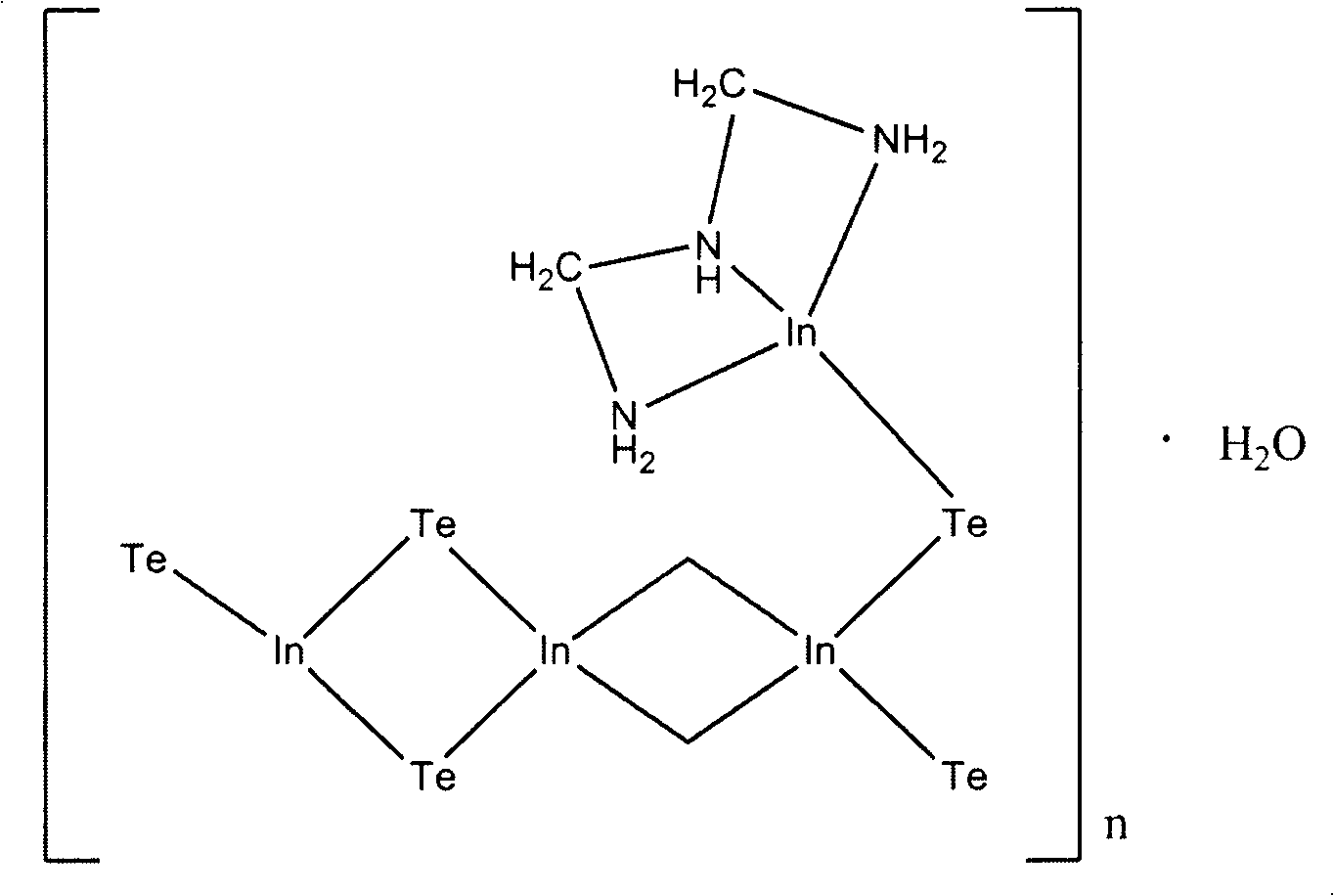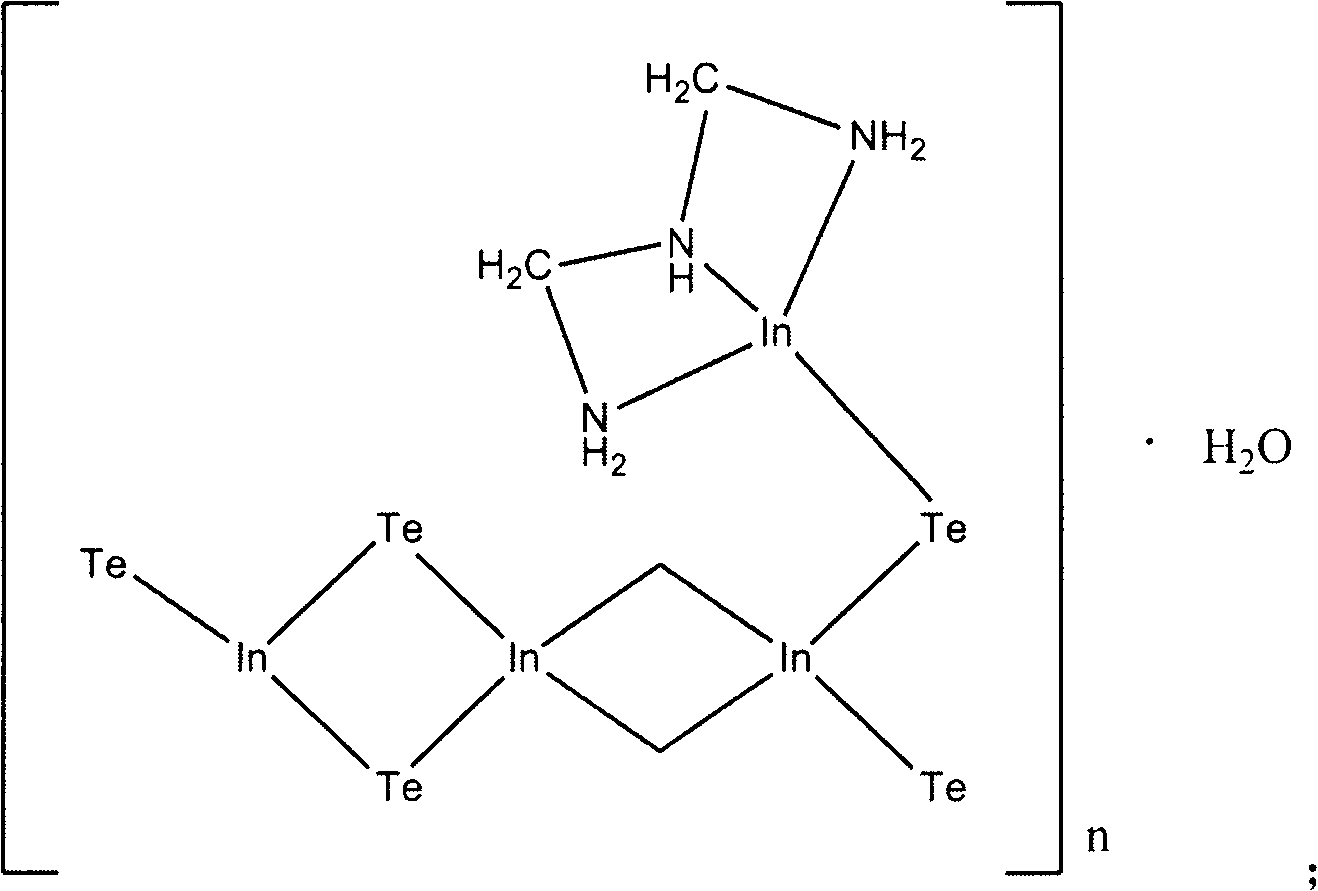Organic hybridized telluride having photocatalytic performance and preparation thereof
A technology of organic hybridization and photocatalytic activity, applied in organic chemistry, organic compound/hydride/coordination complex catalysts, chemical/physical processes, etc., can solve the problems of incomplete degradation of organic dyes and limited photocatalytic applications , to achieve the effect of good repeatability and simple process
- Summary
- Abstract
- Description
- Claims
- Application Information
AI Technical Summary
Problems solved by technology
Method used
Image
Examples
Embodiment 1
[0022] 1. Compound Preparation
[0023] InCl 3 0.0179g (0.07936mmol), Te 0.0057g (0.04467mmol), MgCl 2 ·6H 2 O0.0206g (0.1015mmol) and 3ml of diethylenetriamine were added to a hard glass tube, and the two ends of the glass tube were sealed. Keep at 170°C for 7 days, then cool down to room temperature naturally. Blocky crystals appeared. The crystal sample was taken out, washed with ethanol three times, and dried in a desiccator to obtain 0.0390 g of diethylenetriamine monohydrate indium telluride crystal. Yield 40% (based on tellurium).
Embodiment 2
[0025] InCl 3 0.0179g (0.07936mmol), Te0.0057g (0.04467mmol), MgCl 2 ·6H 2 O0.0206g (0.1015mmol) and 3ml of diethylenetriamine were added to a hard glass tube, and the two ends of the glass tube were sealed. Keep at 160°C for 7 days, then cool down to room temperature naturally. Blocky crystals appeared. The crystal sample was taken out, washed with ethanol three times, and dried in a desiccator to obtain 0.0390 g of diethylenetriamine monohydrate indium telluride crystal. Yield 40% (based on tellurium).
Embodiment 3
[0027] InCl 3 0.0179g (0.07936mmol), Te0.0057g (0.04467mmol), MgCl 2 ·6H 2 O0.0206g (0.1015mmol) and 3ml of diethylenetriamine were added to a hard glass tube, and the two ends of the glass tube were sealed. Keep at 180°C for 7 days, then cool down to room temperature naturally. Blocky crystals appeared. The crystal sample was taken out, washed with ethanol three times, and dried in a desiccator to obtain 0.0390 g of diethylenetriamine monohydrate indium telluride crystal. Yield 40% (based on tellurium).
[0028] The prepared diethylenetriamine indium telluride monohydrate crystal was scanned in the ω-θ mode with Mo Kα (λ=0.071073nm) rays monochromated by a graphite monochromator on a Bruke smart APEXII CCD diffractometer. At 296K, a total of 1271 diffraction spots were collected. By the full matrix least squares method for F 2 The modified structural analysis was done with the SHELXL-97 software package. The molecular formula of the compound is C 8 h 16 In 6 N 6 o...
PUM
 Login to View More
Login to View More Abstract
Description
Claims
Application Information
 Login to View More
Login to View More - R&D
- Intellectual Property
- Life Sciences
- Materials
- Tech Scout
- Unparalleled Data Quality
- Higher Quality Content
- 60% Fewer Hallucinations
Browse by: Latest US Patents, China's latest patents, Technical Efficacy Thesaurus, Application Domain, Technology Topic, Popular Technical Reports.
© 2025 PatSnap. All rights reserved.Legal|Privacy policy|Modern Slavery Act Transparency Statement|Sitemap|About US| Contact US: help@patsnap.com


